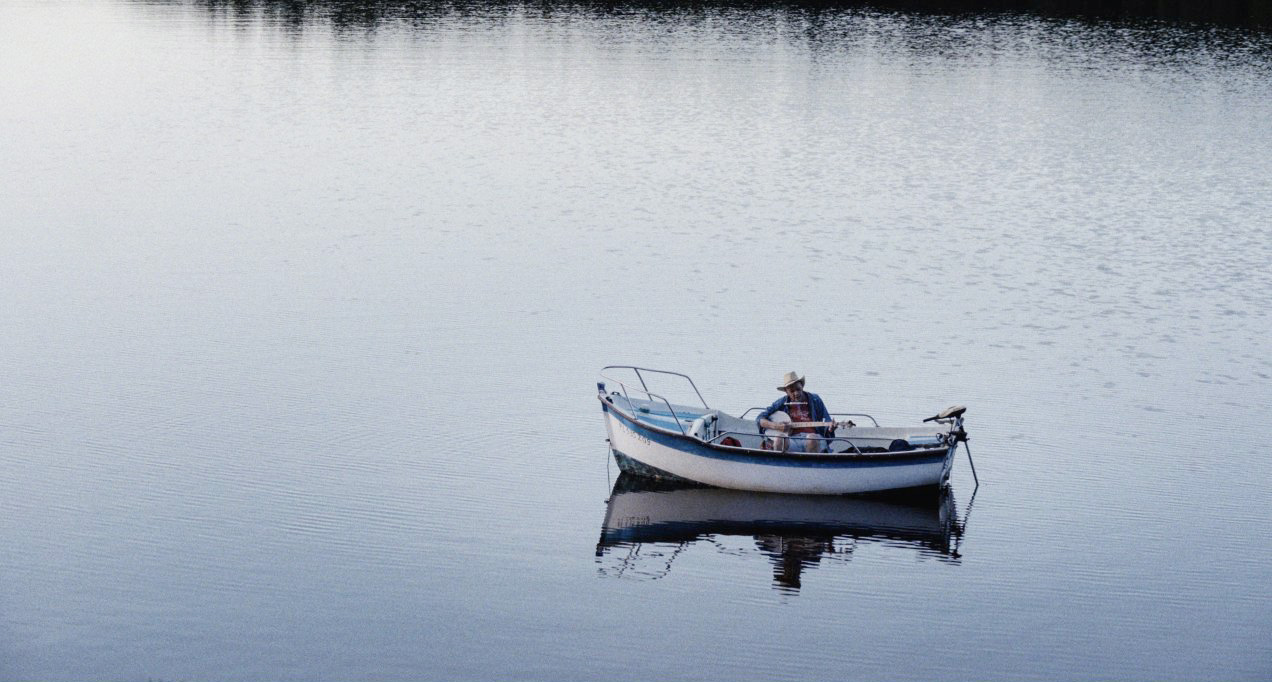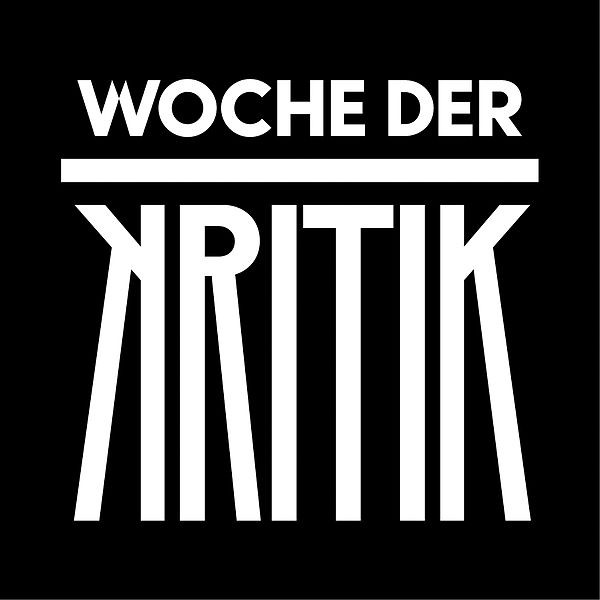Festivals The 10th Berlin Critics’ Week (14th-22nd February, 2024)
The 10th Berlin Critics’ Week

Background
In 1964 there was a one-off event called Berlin Critics’ Week, a sidebar that was intended to further enhance the credentials of the Berlinale as not just being a major international film festival, but also one that attracted intellectual debate. It was initiated by the Berlin-based film critics Erika Gregor with her husband Ulrich Gregor, and with a nod to the International Critics' Week (Semaine internationale de la critique), created in 1962 as a parallel section of the Cannes Film Festival (since 2008 known simply as Cannes Critics' Week) and is now the oldest non-official and prestigious Cannes sidebar. Back in Berlin, in 1963 Erika and Ulrich Gregor had founded the Friends of the German Cinematheque intentionally to be in tandem with the recently established German Cinematheque archive and so wanted to make these film holdings accessible to the public. More than this, they wanted to carry out on-going film cultural work by researching and curating films from other archives, screening some of them alongside contemporary films, considering this very important in order to underline that their work was not solely as a film archive. They also published the series of Cinematheque booklets (Kinemathekheft) to accompany the films.
The following year would be a prophetic one for The Friends of the German Cinematheque. In 1964, the Bayreuther Lichtspiele cinema opened on the ground floor of a residential building in Berlin’s Schöneberg district and this would later be used as the residential cinema for the Gregor’s and their work. However, 1964 would be a challenging year for the Berlinale but also one that would help shape its future. This was still the height of the Cold War and the run-up to the festival seemed to be jinxed by both lack of competencies as well as political issues. The Berlinale had already been struggling with various presentation debacles in the previous years. Festival director Alfred Bauer, feeling the pressure most of all, rejected the controversial Swedish feature film 491 (Dir. Vilgot Sjöman, 1964) in order to appease the church. However, he had to employ a formal trick, because the festival rules forbade him to do this and so it led to widespread anger. Additionally, Bauer’s inclusion of Wolfgang Staudte’s film Herrenpartie (Destination Death, 1964) over the heads of the selection committee only made matters far worse. Ultimately, both the audience and critics’ considered that no film in competition was worthy of inclusion. This meant that the Golden Bear awarded to the Turkish folkloric film Susus Yaz (Dry Summer, Dir. Metin Erksan, 1963) was therefore a “certificate of impoverishment”. Ulrich Gregor called the awarding of the Golden Bear as making a “mockery of the audience and the press” when writing about the festival that year. At the end of the 1960s, the Gregor’s initiated the International Forum of Young Cinema, first held under its own sponsorship before becoming part of the Berlinale in July 1971 under the title Forum. It would distinguish itself from the competition through a different understanding of film and its own criteria for selecting and presenting films.
After years of screenings at the Academy of Arts and other cinemas, The Friends of the German Cinematheque would find a permanent home at the Bayreuther Lichtspiele. On 3rd January 1970 the screening of Arsenal, the 1928 Ukrainian (at the time, Soviet Union) feature film directed by Oleksandr Dovzhenko, would give The Arsenal Cinema its name. It was the first non-commercial cinema in Germany and a model for all German municipal cinemas. The Arsenal Cinema would reside in the Schöneberg residence for thirty years where organised retrospectives and thematic programmes were shown. In 1977 a new cinema named Arsenal 2 was set up in an adjoining room of the main Arsenal cinema to show experimental, underground and avant-garde films. From 1971 to 1979 Ulrich Gregor was a resident speaker and then from 1980 to 2000 he was director of the International Forum of New Cinema at the Berlinale. From 1981 to 2000 he was co-director of the Berlin Film Festival along with Moritz de Hadeln. Erika Gregor was director of the Forum together with her husband Ulrich for 30 years until 2001.
Fast-forward to 2015 and the Berlin Critics’ Week was re-introduced, and has been held regularly in parallel with the Berlinale ever since. Now both into their tenth decade but still heavily involved with the Arsenal Cinema, Erika and Ulrich Gregor have been able to witness the re-birth of Critics’ Week after a 51-year pause following its primary edition. The Critics' Week is organised by the Association of German Film Critics (VdFk), also based in Berlin. Since 2015, the venue has been the Hackesche Höfe cinema in Berlin-Mitte. The artistic director in 2015 was the film critic Frédéric Jaeger, also the executive director of the Association of German Film Critics. In 2020, Dennis Vetter took over the artistic direction of the festival and gathered a small team around him: Amos Borchert, Elena Friedrich, Istvan Gyöngyösi and Petra Palmer also sharing responsibility for the artistic direction of the mini-festival. Despite Berlin Critics’ Week being somewhat overshadowed by the main Berlinale event itself, it still has a certain kudos for all those who like to combine an alternative consumption of the film festival experience with a means of intellectual reflection as a platform for healthy debate. The format runs on eight consecutive days, where an internationally unreleased main film is shown which is linked to an aesthetic or cultural-political theme and provides the basis for subsequent discussion between producers, directors, art directors, actors, and also the audience.
 Berlin Critics’ Week 2024
Berlin Critics’ Week 2024
Berlin Critics’ Week 2024 took place from 14th-22nd February, 2024 and began with the opening conference that was somewhat defiantly titled Filmmaking Against All Odds? – Cinema, Criticism, Climate Crisis. It was held at the Akademie der Künste in Pariser Platz next to Berlin’s iconic Brandenburger Tor. The clear message of the conference was a plea for urgent reversal in the face of man-made climate change and took the perfect setting of an A-List festival that is the Berlinale to address how filmmakers, critics and activists can (or should) exert their influence on the requisite mandatory process towards sustainability. With this came challenging questions for debate: How can artistic freedom be made compatible with the imperatives of sustainability? How industrial should the cinema of the future be? What routines and automatisms are proving debilitating to the film sector? And which political interventions seem necessary or meaningful? These topics were addressed in a panel discussion involving the film producers Ada Solomon, Fee Buck, Cassandre Warnauts and journalist Sara Schurmann, accompanied by talks from the journalist Sara Schurmann and by the art historian and cultural critic T. J. Demos, the latter of whom would feature again in debates during Critics’ Week.
The film program began on 15th February at Berlin’s central Hackesche Höfe Kino. This tenth edition of the program featured subjects ranging from Indian experimental films, love triangles, female anger, and career-obsessed businessmen. Additionally, one could also watch films about the collapse of buildings or political systems, and a police station being the setting for an afterlife. For the ecology conscious, there were little monkeys that bonded with a giant fish, and a horse girl seeking to simulate the world. Alongside these playful, idiosyncratic and experimental visual approaches, conscientious films also made an appearance, facing up to the various global crises with compassionate understanding.
Day One - Phantom Thread
The opening evening program was titled Phantom Thread and looked at approaches to film form. In attendance were representatives of the evening’s films: Srikanth Srinivasan is a film critic and author, and also a member of the Berlin Critics’ Week selection committee. He has already published two books on Amit Dutta – considered one of India’s most important experimental filmmakers, whose enjoyable 25-minute short Mother, Who Will Weave Now? (2022) opened the evening. An ambitious yet playful attempt to replicate the grand tapestry of Indian textile traditions, it uses an animation style evocative of the Eastern European masters, which further helped it to evoke, intrigue and resonate. Juxtaposing images of historical Indian with classical Indian literature certainly doesn’t lack ambition, and the whole effect has a sewn together backdrop that borrows the words and motifs of Kabir (1398–1518 CE), the well-known Indian weaver-saint and mystic poet who, to this day, is still an important figure in Hinduism, Sikhism and Islam, especially in Sufism.
Graham Swon was also present with his second film as director, the experimental feature An Evening Song (For Three Voices) (2023). Already, as both director and producer, Swon has proven himself an original exponent of historical references and allusions to different film eras, genres and styles, where his protagonists and their perspectives appear to be embedded in some otherworldly vortex. An Evening Song (For Three Voices) is set in 1939, somewhere in the American Midwest with the three protagonists: Richard, his wife Barbara, and their newly employed religious housekeeper, Martha. Struggling as a pulp novel author, Richard is now working as a clerk. Barbara is a talented but flawed poet and has moved to the country to escape the constant presence of people that she feels is responsible for her writer’s block after not having written anything in years. Martha is paid cheaply as a maid but still considers it good money. She also has a scarred face that hints at a traumatic and abused past. From here, regular voice-over narrations and dialogues of the three main characters draw us into spellbinding scenes of otherworldly thoughts, memories, aspirations and repressed desires.
The two screenings set the discussion tone for what connects seemingly disparate films, from their experimental playfulness to notions of idiosyncratic formal approaches, along with image textures that are intended to captivate an audience. Both films were also having their German Premieres and the moderator of the discussion was the Argentinian film critic, curator and filmmaker Lucía Salas, also part of the Critics’ Week selection committee. Graham Swon talked about how he created the unique effect for his film using a large format digital photography camera. The unusual visual effect was created by filming a projection of the images onto glass, which is why it has the hard vignette effect texture, making the overall effect simultaneously high and low resolution.
Srikanth Srinivasan says that Amit Dutta’s film was constructed from scans of textiles that were made available from the Museum of Art and Photography in Bangalore. According to Srinivasan, the director’s approach was to take the archive that he had at his disposal and then spontaneously reacted to what was readily available to him. There was no real information as to why these scans were made and what the origins were because there is no taxonomy or recorded chronology of them. However, Srinivasan commends Dutta’s way of managing to re-historicise everything that is historical. Graham Swon was also impressed by Dutta, particularly managing to create both a narrative film and abstract film, not least the assimilating of tapestries into a particularly individualistic cinematic language art form.



